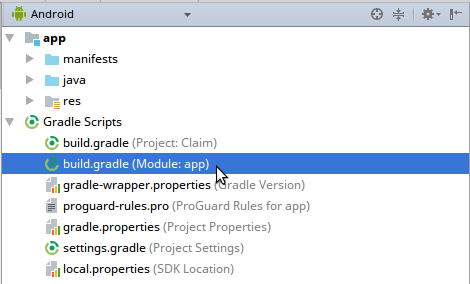So far, you've been copying the data from your data model into your presentation layer by hand, and then copying it back as well. This shifting data back and forth between stateful widgets is something that you always need to do at some level. Where and how the data is copied can change, but it has to be done to make applications work. In this chapter, we'll look at a system provided by Android called data binding. Data binding provides an alternative to the copying back and forth of data, but also opens several other design opportunities to allow more reuse of code.
Data binding offers you a way to dramatically reduce the amount of boiler-plate code in your application, while remaining type-safe and providing excellent performance. The data binding engine allows you to provide user interface logic that is clearly separated from the layout resources, and can be easily reused by many screens in the application, while reducing the complexity of both the application...




